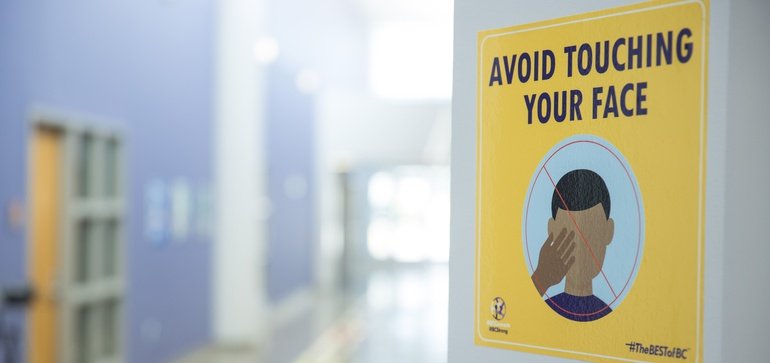Artis balanced health and equity concerns when opening campus this fall, a move observers say makes her a model for college leaders nationwide.
Roslyn Clark Artis, president of Benedict College, knows her students well.
While sitting in her office at the historically Black school in South Carolina, she rattled off a few facts: Fewer than one-quarter of Benedict students have their own laptop or computer. Twelve percent don’t live in an area with broadband access. And 31% experience housing insecurity.
For those groups of students, taking online classes at home hasn’t been an option, so Benedict officials reopened the campus for them this fall while encouraging the rest to stay home.
“We’re open because we have to be for a group of students who need us desperately, but the goal is not to overpopulate the campus in the middle of a pandemic,” she said.
A model for college leaders
Artis has deftly steered Benedict through the pandemic’s billows, balancing educational equity with the health and safety of its roughly 1,700 students, a vast majority of whom are Black, according to federal data.
The pandemic is disproportionately killing Black people. In South Carolina, Black residents account for 39% of coronavirus-related deaths even though they make up only 27% of the population, according to data from The COVID Tracking Project as of Nov. 13.
Benedict officials have carefully implemented safety measures and provided different instructional modalities for students, Brian Bridges, former vice president of research and member engagement at UNCF, which lobbies on behalf of private HBCUs, said in October. Bridges, now the acting secretary of higher education for New Jersey, said Artis is a model not just for other HBCU leaders, but “for college leadership across the country.”

The challenges started in March, when college students nationwide were sent home en masse. “The only difference at Benedict is our students are low-wealth, first-generation, kids of color,” Artis said. “We could not simply say you have 24 hours to get out.”
Instead, Benedict quickly raised $50,000, primarily from the college’s trustees, to pay for some students’ travel expenses. Officials booked plane tickets and ran all-day shuttles to nearby cities within and outside the state. They also gave some students cash for airport snacks and checked bags.
“We declared the evacuation on Sunday,” she said. “The last kid left Wednesday at 6:40 p.m.”
More hurdles came in the summer. Protests flared up across the country over police brutality and systemic racism when George Floyd, a Black man, died after a White police officer knelt on his neck for more than eight minutes. Though the campus was reeling, Artis said, students couldn’t gather to unpack their emotions.
That wouldn’t be the last blow. Benedict officials were still hammering out their fall plans in late July when they learned one of the school’s football players was shot and killed while away from campus. In a normal year, Artis said, he would have been at Benedict’s training camp instead.
“For me, that crystallized it,” she said. “Hands down, no choice — we’re opening.” The school was clear, however, that the invitation only extended to students who didn’t have the space, tools or ability to learn virtually at home.
Marybeth Gasman, executive director of Rutgers University’s Center for Minority Serving Institutions, lauded Artis’ messaging to families. “I not only appreciate that as a scholar,” Gasmansaid, “I appreciate that as a parent who wants to see presidents being transparent about what’s going on at their institutions.
'We're not kidding about this'
In all, 671 students were living on campus this fall. The college spent $2.5 million, most of which came from federal relief funding, on safety measures, including virus testing, cleaning and personal protective equipment.
Hard-and-fast rules guided their daily lives. They had to wear masks during class. They had to be in their dorms by midnight. And if they had to leave campus to go home, they were tested for the coronavirus on their return.
The consequences for breaking the rules could be dire. “We suspended a couple of kids early on to set the tone that we’re not kidding about this,” Artis said.
“We could not simply say you have 24 hours to get out.”
Roslyn Clark ArtisBenedict tested all on-campus students for the virus upon their arrival and randomly throughout the term. The move was prescient. A few weeks after the semester started, the Centers for Disease Control and Prevention recommended colleges perform that type of testing. At least one study also suggested frequent testing would be necessary to control outbreaks.
The college’s testing turned up 17 positive cases from Aug. 3 to Oct. 30, which is the duration of the on-campus term, representing a 1.4% positivity rate, Artis said.
“We care about these kids on a much deeper level than perhaps some institutions have the time or inclination to,” she said. “That’s not a criticism of any other institution; it is an amplifying of how special I think this school is.”
highereddive.com, December 9, 2020.




